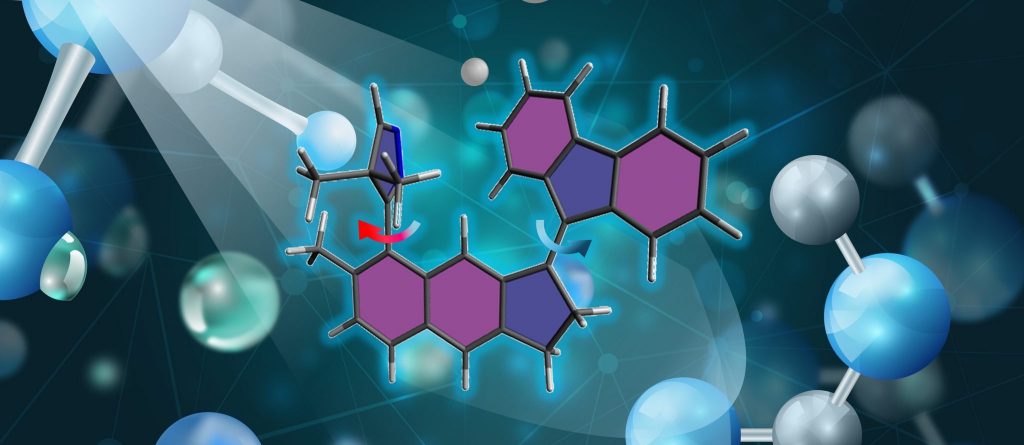Article in Science Advances (2025)
27 05 2025
Motors at the Nanoscale
Synthetic molecular machines are molecules engineered by chemists to perform controlled movements in response to external stimuli — they are molecular equivalents of everyday machines but operate at the atomic scale. A particularly remarkable type of such machines is molecular motors — individual molecules designed to rotate when powered by external energy, such as light, electricity, or chemical fuel. Although they are thousands of times smaller than the diameter of a human hair, they can perform functions similar to macroscopic engines. Their development opens new possibilities in areas such as targeted drug delivery, smart materials, and nanorobotics.
Chirality is key
What fundamentally distinguishes molecular motors from other molecular machines is their orderly, unidirectional rotary motion. The factor that determines the direction of a motor’s rotation is chirality, or the handedness of its molecular structure. In traditional motor systems, the chirality is permanently “built into” the compound’s structure and difficult to change once the molecule has been synthesized. In practice, this means that a given motor molecule will always rotate in one fixed direction: either clockwise or counterclockwise.
To overcome this limitation, researchers from the Faculty of Chemistry at the University of Warsaw — Dr. Joanna Jankowska, Dr. Eng. Wojciech Danowski, and Kamil Szychta, a student at the UW Faculty of Physics — have designed an innovative molecular motor whose direction of rotation can be remotely controlled using an electric field pulse, thanks to the presence of a special switching unit. This discovery opens new possibilities for precise control over processes at the level of individual molecules and could find applications in molecular engineering, nanotechnology, and the creation of smart surfaces.
The study employed advanced quantum chemistry methods and molecular dynamics simulations to predict the molecule’s behavior upon photoexcitation and the application of electric field pulses. The focus was on a specially designed molecule, PFCN (symbolically shown in the graphic), whose chirality can be switched by applying a properly oriented electric field. Once the chirality is set, the designed system operates stably and maintains its rotation direction even after the field is turned off.
What’s next?
This work opens new perspectives for creating functional molecular systems that can be “programmed” remotely — for example, to move molecules, transport charge, or switch surface states. Potential applications include nanorobots, smart materials, and precision drug delivery systems. The next step will be to validate the concept of electric field–switchable motors in laboratory experiments and to identify practical platforms on which they can be implemented and controlled under real-world conditions.
Publication:
Unidirectional molecular rotary motor with remotely switchable rotation direction
Kamil Szychta, Wojciech Danowski, and Joanna Jankowska*
Sci. Adv. 11, eadt8008 (2025), DOI: 10.1126/sciadv.adt8008
https://www.science.org/doi/10.1126/sciadv.adt8008

